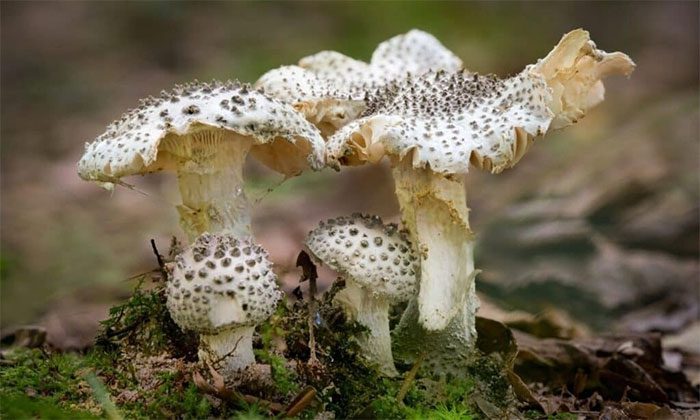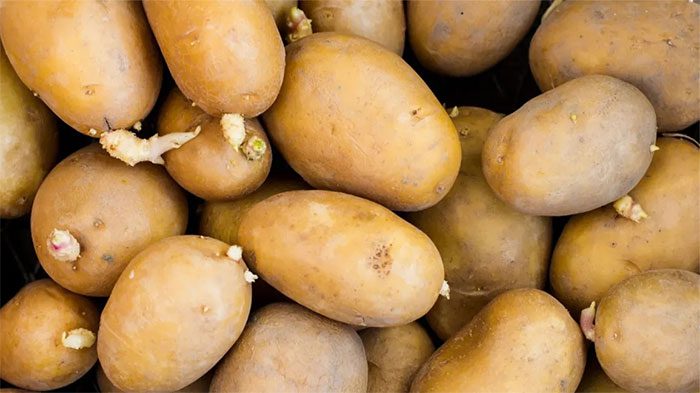Not only wild mushrooms can contain toxins, but some common vegetables and grains also pose a risk of poisoning.
Recently, the Food Safety Department (Ministry of Health) issued a letter requesting the Departments of Health in provinces/cities under the Central Government and the Food Safety Management Boards in provinces/cities to direct localities to enhance efforts in preventing poisoning caused by natural toxins.
According to the Ministry of Health, poisoning incidents due to the consumption of food containing natural toxins (such as poisonous mushrooms, wild fruits, and wild plants) often occur in the spring and early summer, especially in the northern mountainous provinces and the Central Highlands.

Toxic wild mushrooms can cause vomiting, diarrhea, confusion, and hallucinations. (Photo: Istock).
The World Health Organization (WHO) defines natural toxins as harmful compounds produced by living organisms. These toxins do not harm the organisms themselves but can be toxic to other organisms, including humans, when ingested accidentally.
Below are some of the most common natural toxins that can harm human health.
Poisonous Mushrooms
Wild mushrooms can contain several toxins such as Muscimol and Muscarine, which cause vomiting, diarrhea, confusion, visual disturbances, salivation, and hallucinations. Symptoms may occur 6-24 hours or more after consumption of the mushroom.
Fatal poisoning is often associated with symptoms that appear late but are serious, causing toxicity to the liver, kidneys, and nervous system. People need to be aware that cooking or peeling does not eliminate the activity of the toxins. Therefore, everyone should avoid eating any wild mushrooms unless they have been definitively identified as non-toxic.
Aflatoxin from Mold
Mold toxins are natural harmful compounds produced by certain types of molds. Mold can produce these toxins on many types of food such as grains, dried fruits, nuts, and spices.
Mold growth can occur before or after harvest, during storage, and in food, typically under warm, humid, and damp conditions.
Most mold toxins are chemically stable and persist during food processing. They can cause acute poisoning with severe symptoms and even rapid death if highly contaminated products are consumed. Additionally, long-term exposure to mold toxins increases the risk of cancer and immune system suppression.
Toxins in Potato Sprouts
All Solanaceae plants, including tomatoes, potatoes, and eggplants, contain natural toxins known as solanine and chaconine. Higher concentrations of these toxins are found in potato sprouts, bitter skins, and green parts, as well as in green tomatoes.
Plants produce toxins to defend against bruising, ultraviolet rays, microorganisms, insect pests, and herbivorous animals. To reduce the production of solanine and chaconine, it is essential to store potatoes in a dark, cool, and dry place and not to eat sprouted potatoes.

Sprouted or green potatoes contain high concentrations of toxins. (Photo: Healthline).
Poisoning from Water Chestnut
The water chestnut often grows wild or is cultivated in high mountainous regions along the northern border, such as Lao Cai, Ha Giang, and Cao Bang. All parts of the plant contain Aconitine toxin, with the highest concentration found in the tuber roots.
Aconitine poisoning from water chestnut primarily occurs due to overdosing on herbal remedies, mistakenly consuming topical ointments containing this plant for pain relief, or ingesting the roots due to confusion with celery or radishes. Water chestnut poisoning can also result from consuming porridge made from this plant if not processed correctly.
Initial symptoms of poisoning include numbness of the mouth and tongue, tingling in the extremities; after a few hours, symptoms may progress to drooling, nausea, vomiting, diarrhea, and difficulty breathing. Among these, the most characteristic symptom is a loss of sensation throughout the body and cardiovascular disturbances.
Poisoning from Cassava
Cassava contains a type of toxin known as glucoside, which, when combined with digestive enzymes, water, or acid, hydrolyzes and releases hydrocyanic acid (HCN). When the concentration of HCN exceeds 7 mg/100 g of cassava, poisoning can occur, potentially leading to death.
Symptoms of cassava poisoning typically appear a few hours after consumption and include digestive disorders (bloating, stomach rumbling, nausea, vomiting, and diarrhea), neurological disturbances (dizziness, facial flushing, tinnitus, vertigo, itching, heaviness in limbs, agitation, tremors, seizures, and in some cases, death) and may even present with fever or cough.
Toxins in Yellow Radish
These toxins are found in various plants, including yellow radish, celery roots, citrus plants (lemons, grapefruits, bergamot oranges), and some medicinal plants. Furocoumarins are the toxins released in response to stress such as physical damage to the crops.
Some of these toxins can cause gastrointestinal issues in sensitive individuals. Additionally, furocoumarins are phototoxic, meaning they can cause severe skin reactions under sunlight (when exposed to UVA rays).
Preventing Natural Toxins
When it comes to natural toxins, it is important to note that they are present in various crops and foods. In a healthy diet, the levels of natural toxins are much lower than the acute and chronic toxicity thresholds.
To minimize health risks from natural toxins in food, individuals should:
- Not assume that “natural” food is safe.
- Discard any food that is bruised, spoiled, or discolored, especially if moldy.
- Dispose of any food that does not smell or taste fresh or has an unusual flavor.
- Only consume mushrooms or other wild plants that have been definitively identified as non-toxic.
Top 4 Most Poisonous Mushrooms Commonly Found in Vietnam


















































